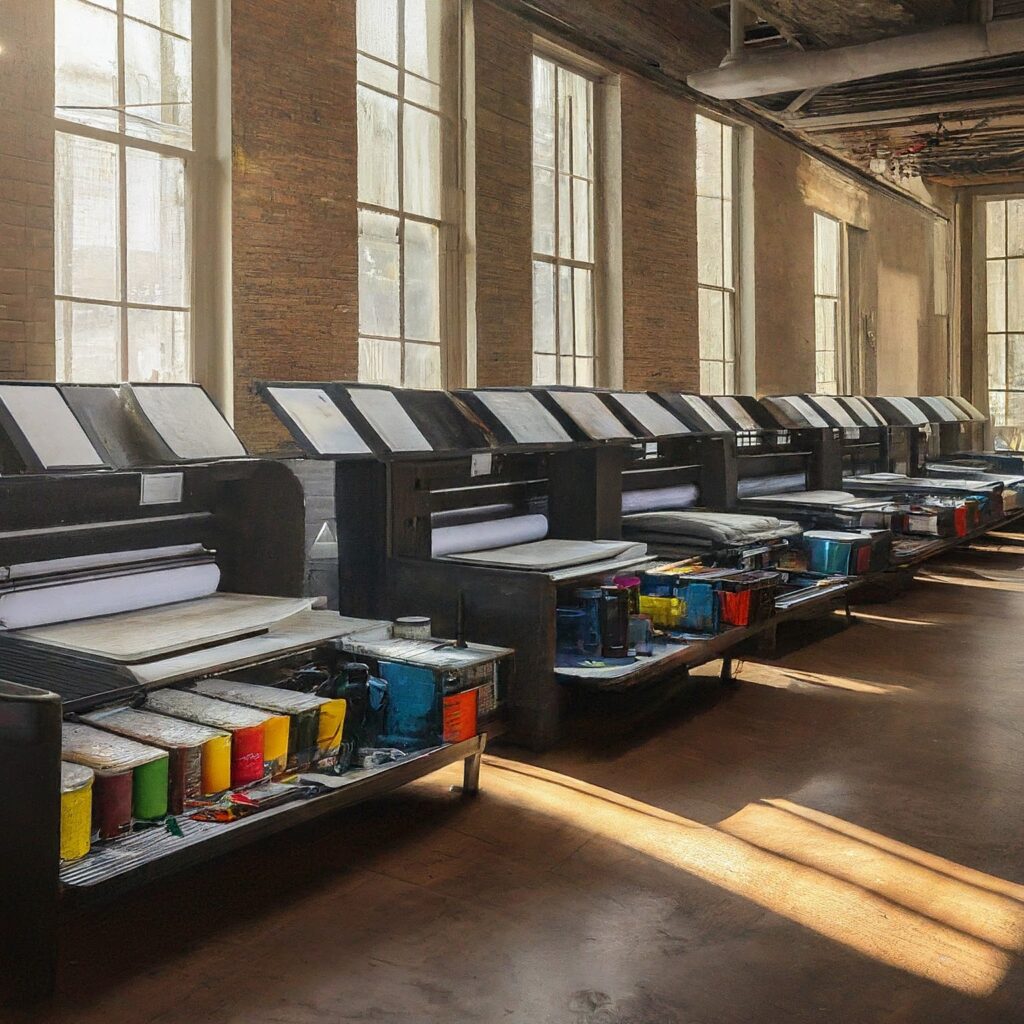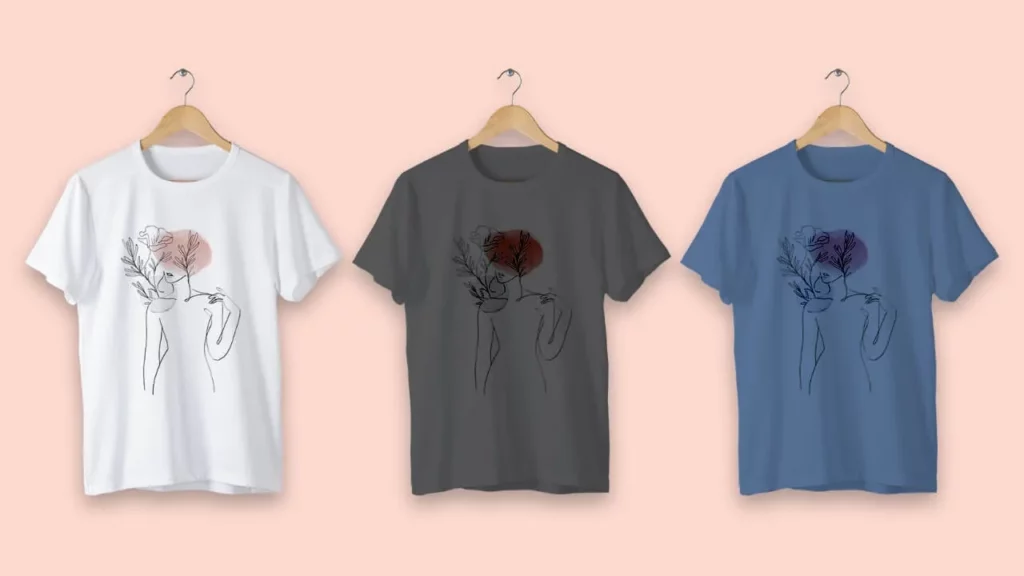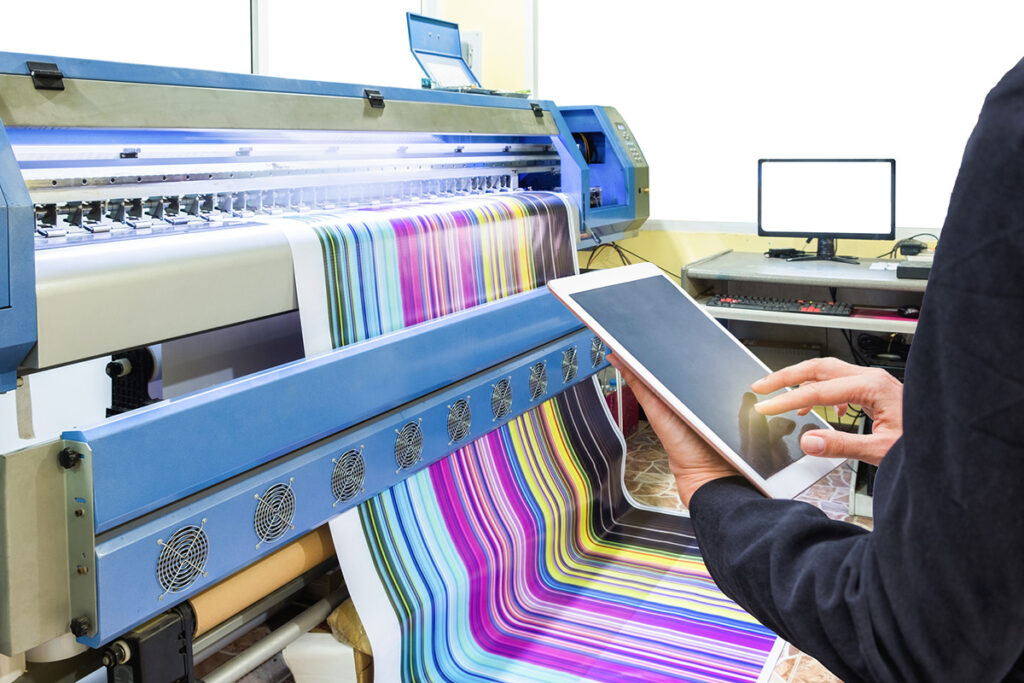
Do you need many shirts, hats, or mugs printed with your design? Picking a suitable printing method can take time and effort. This article covers all the nitty-gritty details of DTF printing in big batches!
Bulk orders, no problem!
DTF Printing vs. The Rest
- DTF Printing: Designs are printed on a particular film, then heat-pressed onto your stuff.
- Screen Printing: Uses stencils to push ink through a screen onto fabric.
- Direct-to-Garment (DTG): Sprays ink directly onto the fabric with a fancy inkjet printer.
- Heat Transfer Vinyl (HTV): Pre-cut vinyl designs are ironed onto fabric.
Why DTF?
- Cost: DTF wins for big batches! The cost per shirt gets cheaper the more you print. Screen printing might be cheaper for HUGE orders, but startup costs are high. DTG and HTV get pricier for big jobs.
- Speed: DTF retakes the lead! Pre-printed films make processing garments faster. Screen printing can be fast once set up, but creating the stencil takes time. DTG and HTV involve extra steps like pre-treating shirts and slowing them down.
- Design and Color: DTF and DTG tie! Both handle complex designs and bright colors beautifully. Screen printing can do intricate work too, but colors might not be as vibrant. Vinyl sheet colors limit HTV and struggle with detailed designs.
- Fabric Choice: DTF wins again! It sticks well to many fabrics, even non-traditional ones like wood. DTG works best on cotton and cotton blends. Screen printing usually sticks best to cotton. HTV can be picky about fabrics and might only last for a short time.
- Durability: DTG and Screen printing are neck-and-neck. If done right, both can handle washing and wear for a long time. DTF prints can be challenging, too, but proper pre-treatment is critical. HTV durability depends on the vinyl quality. It might crack or peel over time if not ironed on correctly.
Choosing Your Champion:
- Super Big Orders (Lots of Cash!): Screen printing might be best, but consider the upfront costs.
- Big Orders, Fast, and Affordable: DTF is your champion! It offers a sweet spot between cost and speed.
- Medium Orders, Complex Designs: DTG or DTF work well, depending on budget and fabric needs.
- Small Orders, Simple Designs: HTV can be cost-effective, but remember the design limitations.
Bonus Tips for Big Batch Printing Success:
- Minimum Order Quantities (MOQs): Some methods have minimums, so make sure you can order enough!
- Artwork Specs: Double-check your design meets the printing method’s requirements to avoid delays.
- Turnaround Time: Consider how long each method takes to print so you meet your deadlines.
- Going Green: DTF is getting more eco-friendly with water-based inks! Consider this if sustainability is important.
DTF Printing – A Big Batch Powerhouse

DTF printing is a serious contender for big orders. It’s fast, affordable, and creates stunning designs on various materials.
You can choose the best printing method by understanding its strengths and limitations. A method that caters to your specific needs.
Unleash your creativity, embrace efficiency, and conquer your next big batch printing project!
The Smackdown: Let’s Compare
Now, let’s get down to business! Here’s a breakdown of how each method performs in key areas crucial for conquering big batch printing:
Cost:
Think of your budget like a superhero’s power. DTF takes the lead for big batches! The price per item gets cheaper the more you print. Screen printing might be the ultimate champion for huge orders, but setting it up requires a more significant initial investment. DTG and HTV become pricier for large quantities because of the extra steps involved.
Speed:
Time is money, especially when you have a big deadline looming. DTF wins again when it comes to speed! Since the designs are pre-printed on film, processing each item is faster. Screen printing can be speedy once the stencil is set up, but creating that stencil takes time. Both DTG and HTV require additional steps. Steps include pre-treating shirts and slowing them down for big orders.
Design and Color:
Want your designs to pop like fireworks? DTF and DTG tie for first place! Both methods handle complex designs and vibrant colors beautifully. Screen printing can also handle intricate work, but the colors might need to be more brightly and bold. However, HTV is limited by the colors available on vinyl sheets, and detailed designs can be complicated.
Fabric Choice and Durability Matters!

Fabric Choice:
Not all fabrics are created equal. DTF takes the crown for fabric versatility! It sticks well to various fabrics, including cotton and polyester blends and some non-traditional materials, like wood or leather (with proper pretreatment).
DTG works best on cotton and cotton blends, while screen printing typically sticks best to cotton fabrics. HTV can be picky about fabrics and might only last briefly on some materials.
Durability:
Durability is like a superhero’s shield – it protects your printed design. DTG and Screen printing are neck-and-neck for durability. Both methods can withstand washing and wear for a long time if done right.
DTF prints can be challenging, too, but proper fabric pretreatment is key. HTV durability depends on the quality of the vinyl. If not ironed on correctly with the proper settings, it might crack or peel over time.
Discover the magic of DTF Printing with our Step-by-Step Guide! Unlock the secrets to flawless prints and streamline your workflow today.
Beyond the Basics – Unleashing the Full Potential of DTF Printing
Ready to become a big batch printing champion? Mastering the core DTF printing process is the first step on your journey. DTF offers a surprising amount of creative flexibility, which allows you to push boundaries and create truly unique products.
Here’s a deep dive into some advanced techniques that can elevate your DTF printing skills:
The Art of Layering:
DTF printing isn’t limited to flat, single-layer designs. Explore the world of multi-layered prints with added depth and dimension:
Half-Tone Layering:
Want to create a vintage comic book aesthetic? Print the same design multiple times at varying opacities. This creates a textured, almost 3D effect, perfect for adding depth to portraits or detailed graphics.
Underbase Printing:
Vibrant colors on dark fabrics can be challenging. Print an underbase layer of white ink first to ensure your design pops. This acts as a foundation, preventing the dark fabric from absorbing the colors and making them appear dull.
Special Effect Applications:
DTF printing goes beyond the ordinary! Experiment with metallic inks for a touch of luxury—glow-in-the-dark inks for a fun and eye-catching effect. Even reflective inks are a great choice to make your designs stand out.
Pushing the Boundaries with Special Materials:
DTF printing isn’t just for clothing anymore! Unleash your creativity and experiment with printing on a variety of atypical materials. Expand your product offerings!
Wood Signs and Homeware:
imagine personalized wooden plaques, coasters, or phone cases. With proper pretreatments, DTF printing allows you to create unique and sustainable gifts, especially for merchandise.
Leather Accessories:
Add a touch of personalization to everyday items! DTF printing can adhere to leather wallets, keychains, or bags. Hence allowing you to create customized accessories for yourself or your customers.
Metal Water Bottles and Mugs:
DTF printing is perfect for customizing metal water bottles or mugs, especially for promotional events, corporate gifts, or sports teams.
Optimizing Workflow for Large-Scale Projects

Efficiency is vital when tackling big batch printing.
Here are some tips to streamline your DTF printing workflow. Become a printing superhero in record time:
- Invest in Bulk Ink and Powder! Planning ensures you have enough supplies to conquer your project without delays. Purchasing ink and powder in bulk can also save you time and money when handling large orders.
- Batch Pre-Treat Garments! Save time by pre-treating each garment individually. Pretreatment of several garments simultaneously minimizes downtime between printing runs. Pre-treating prepares the fabric for optimal ink adhesion. It ensures vibrant, long-lasting prints.
- Utilize Automation Tools! Consider using automatic peeling machines for HTV applications or software. These methods allow for batch printing. They enable the queuing of DTF designs. This significantly boosts your productivity while enhancing efficiency for bulk orders.
- Maintain a Clean and Organized Workspace! A cluttered workspace can lead to wasted time searching for materials or tools. Having everything readily available keeps your printing process flowing smoothly. Designate a specific area for your DTF printing setup and keep it organized for optimal efficiency.
Building a Strong DTF Printing Community
Surrounding yourself with other DTF enthusiasts can be a valuable learning resource. Sharing ideas and troubleshooting challenges will help you grow!
Here’s how to connect with the DTF printing community and become part of a supportive network:
Online Forums and Groups:
Immerse yourself in the world of DTF printing! Join online forums and groups dedicated to this printing method. Ask questions, share projects, and learn from the experiences of other DTF printers. There’s a wealth of knowledge waiting to be discovered!
Industry Events and Conferences:
Take your learning a step further by attending DTF printing-specific events or conferences. These events offer opportunities to network with other professionals. You’ll also have access to educational workshops. Staying up-to-date on the latest advancements can keep you ahead of the curve.
Social Media Engagement:
Follow DTF printing accounts on social media platforms like Instagram, Facebook, or YouTube to stay updated on trends and discover new techniques. You can also participate in discussions with other DTF enthusiasts. Social media is a great way to stay connected and inspired!
Embracing Sustainability in DTF Printing

Recycled and Biodegradable Materials:
Explore using recycled materials for garments or packaging. This will minimize your environmental impact. Look for DTF films or pretreatments made with biodegradable components. You can contribute to a more sustainable printing process by making these small changes.
Responsible Waste Management:
Implement proper waste disposal practices for used ink cartridges, transfer film scraps, and other printing materials. Don’t throw these items away carelessly! Research recycling options or responsible disposal methods to minimize environmental impact. A little effort goes a long way in protecting our planet.
The Future of DTF Printing: A World of Possibilities Awaits
DTF printing is a rapidly evolving technology with exciting possibilities on the horizon. Here are some trends to keep an eye on to stay ahead of the curve:
Increased Automation:
Advancements in automation will likely lead to faster printing speeds. This includes improved ink management systems and more efficient overall workflows. Get ready! Automation tools will make printing even easier. They’ll streamline the process for you! So you can produce high-quality prints with less time and effort.
Integration with Design Software:
DTF printers and design software work together seamlessly to improve workflow. Design with precision and send straight to print—just a few clicks! No more manual file conversions, meaning your designs print exactly as you made them.
Expanded Material Compatibility:
The development of new pretreatments and printing techniques is game-changing. They will open doors for DTF printing on a broader range of materials beyond fabrics. Imagine printing stunning designs directly onto glass, metal, or even plastic! This will open doors to exciting new product possibilities! Personalized phone cases, signage, or even decorative tiles will be a no-brainer.
Environmental Sustainability:
The focus on eco-friendly solutions will continue with the increasing availability of water-based inks, biodegradable materials, and energy-efficient printing equipment. Choose sustainable options! DTF printing can become a more environmentally friendly printing method, allowing you to contribute to a greener future.
Conclusion: DTF Printing – Your Partner for Big Batch Printing Success
In big batch printing, speed, affordability, and quality are king. DTF printing emerges as a champion, offering all three in a winning combination.
DTF’s magic lies in its efficiency. The process is fast! Allowing you to churn out large quantities of prints without sacrificing precious time. But speed isn’t everything! DTF delivers exceptional quality, ensuring your prints are vibrant and long-lasting. The best part? It’s budget-friendly, making it an attractive option for cost-conscious businesses.
DTF printing is more than just a production powerhouse. It’s a platform for creativity. Mastering the basics unlocks a world of possibilities. Explore advanced techniques! They will allow you to push boundaries and bring unique visions to life. The best part? DTF is becoming increasingly eco-friendly, with water-based inks and sustainable materials emerging.
But remember, DTF isn’t a one-size-fits-all solution. Success comes from choosing the right printing method for your project. Embrace the potential of DTF, but stay curious! Keep learning and adapting to conquer any printing challenge. With DTF as your partner, you can confidently approach your next big batch order! Knowing you have the tools to create high-impact, high-quality prints that won’t break the bank!